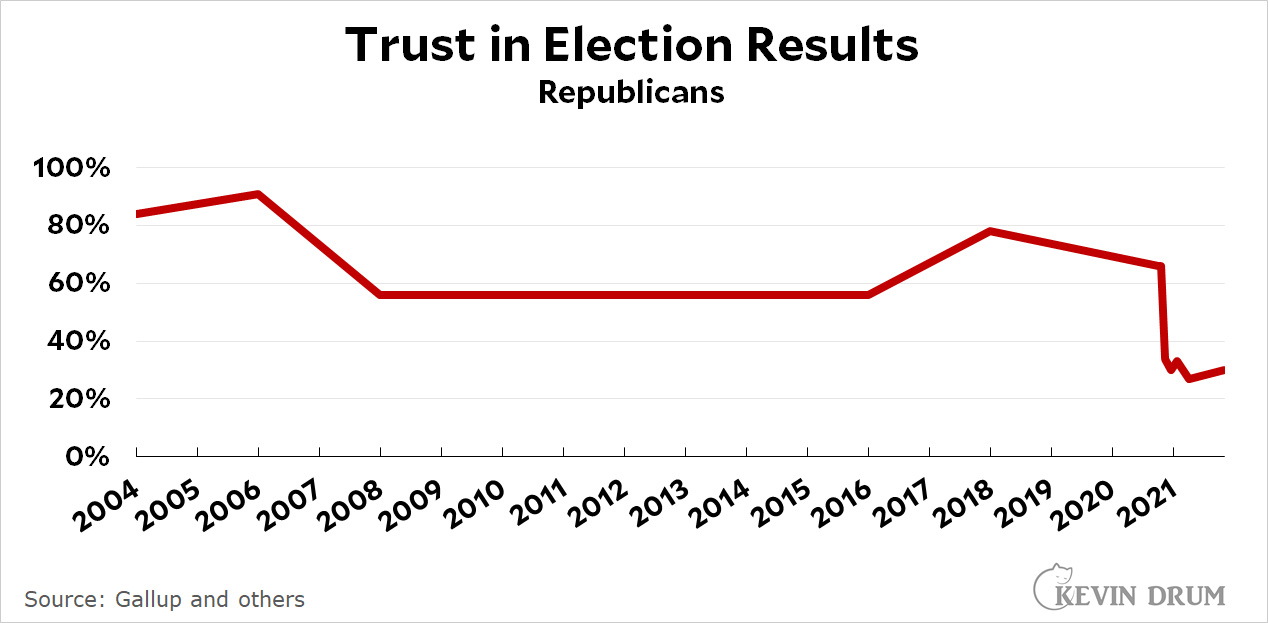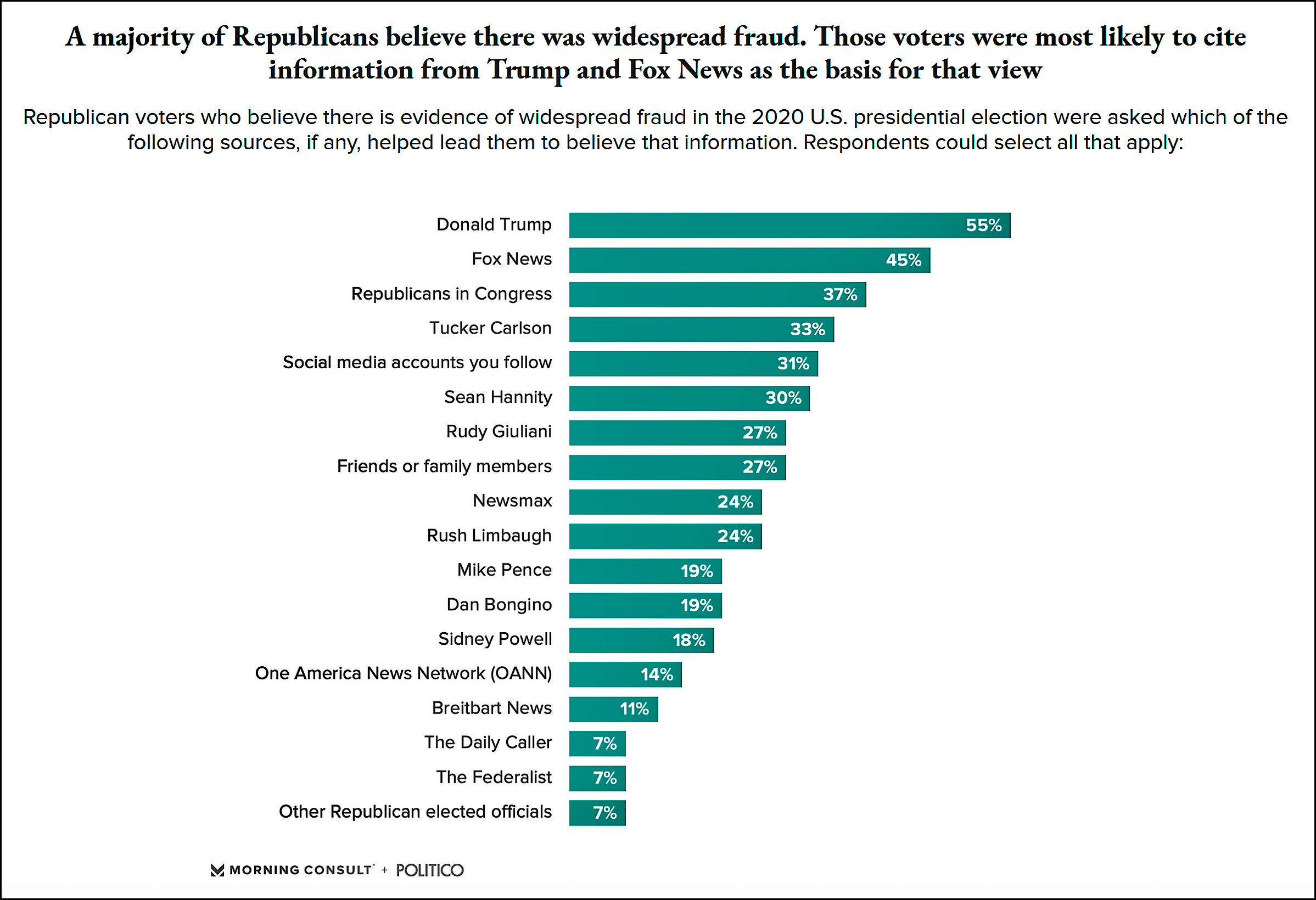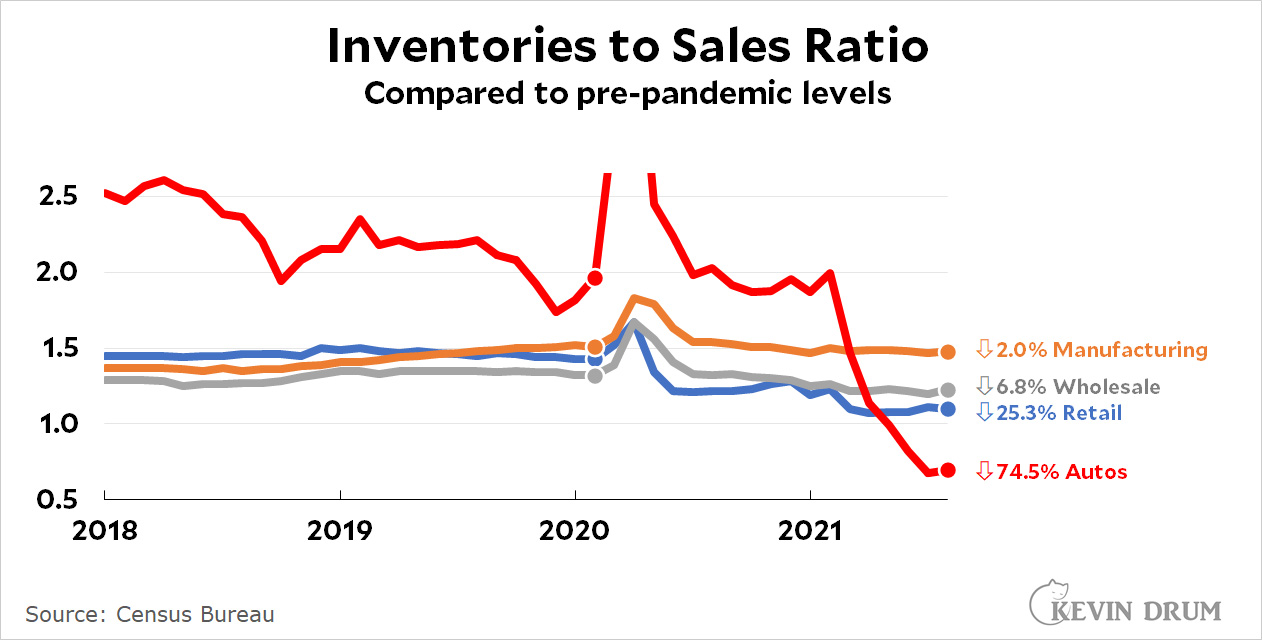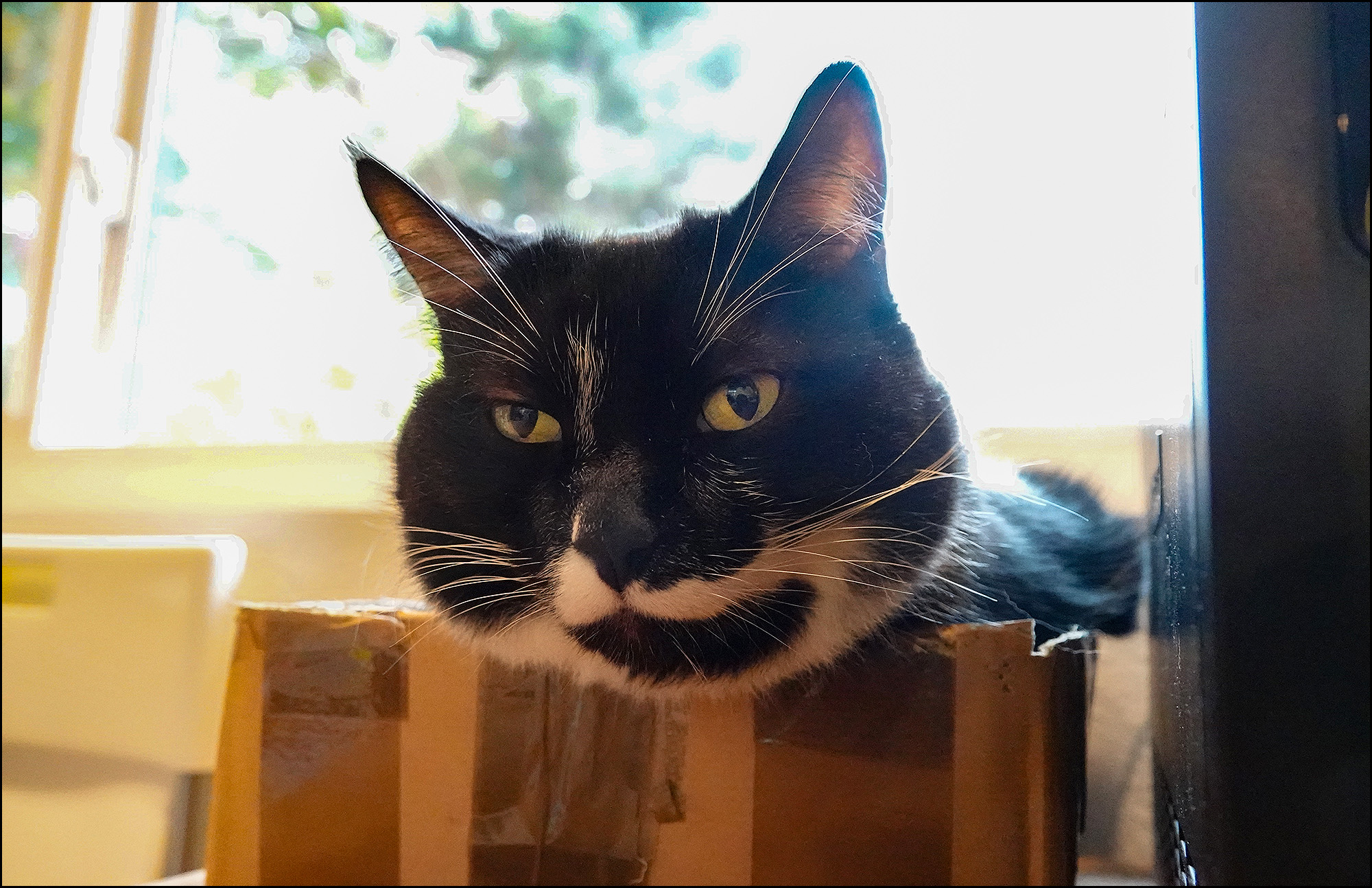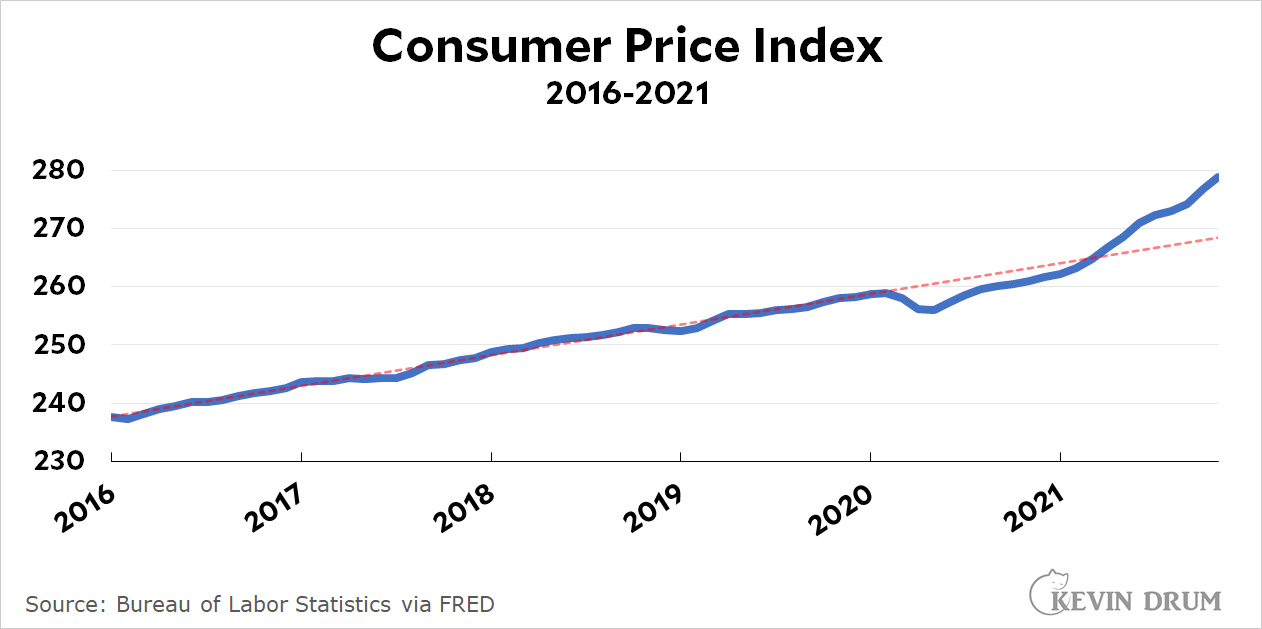Over at the Atlantic, Matthew Walther has a piece today about life during the pandemic:
Where I Live, No One Cares About COVID
Outside the world inhabited by the professional classes in a handful of major metropolitan areas, many Americans are leading their lives as if COVID is over.
The title is not clickbait: Walther argues explicitly that nobody in his rural Michigan community cares a whit about COVID. Nobody wears a mask, nobody avoids crowds, nobody gets tested, nobody ducks play dates for their kids, etc. Presumably some substantial number of people have gotten vaccinated, but otherwise Walther claims that everyone leads normal lives even though COVID is about as deadly now as it's ever been.
Walther is getting massively dragged on Twitter for this, but I was kind of fascinated by his piece since I happened to write something similar just a few days ago:
I suspect that part of the public anxiety over COVID is due to the gigantic mismatch between rhetoric and reality. We are told loudly and often about how bad the COVID pandemic is. We have mask mandates, vaccination mandates, travel restrictions, business shutdowns, deep cleanings, remote schools, and constant reminders of how many people have died. And yet, the reality today is that most of us have only the tiniest sliver of a chance of dying from COVID-19.
Before commenting on Walther's views, I was first curious about whether he was actually right. That is, are lots of rural people simply leading normal lives and ignoring COVID? This is a tough one to answer, but here's something close from the Kaiser Family Foundation's tracking poll:
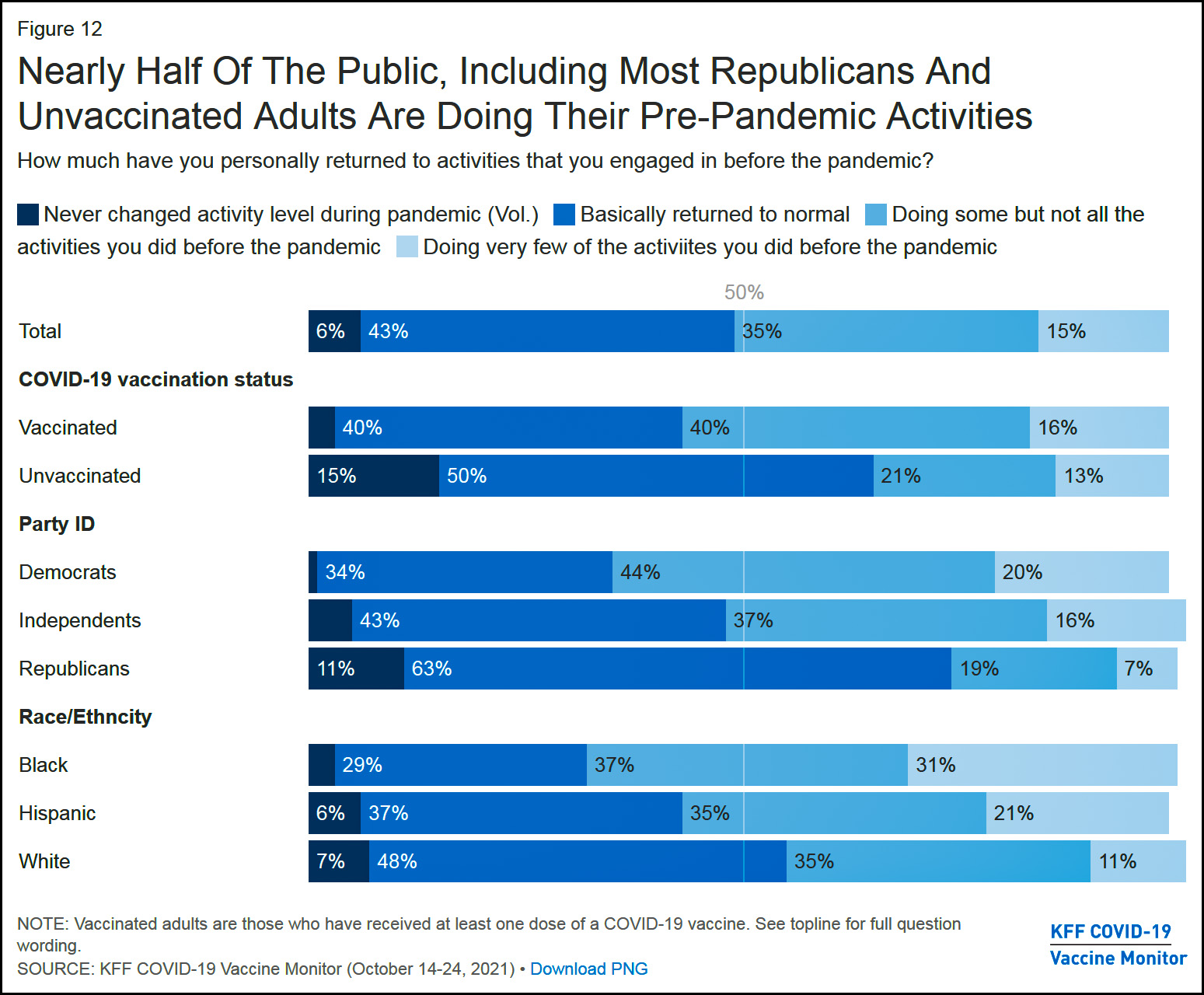 This doesn't report results for rural and urban, but it does report that 74% of Republicans say they are currently leading normal lives. Overall, 49% of adults say they're leading normal lives. On the other hand, there's also this:
This doesn't report results for rural and urban, but it does report that 74% of Republicans say they are currently leading normal lives. Overall, 49% of adults say they're leading normal lives. On the other hand, there's also this:
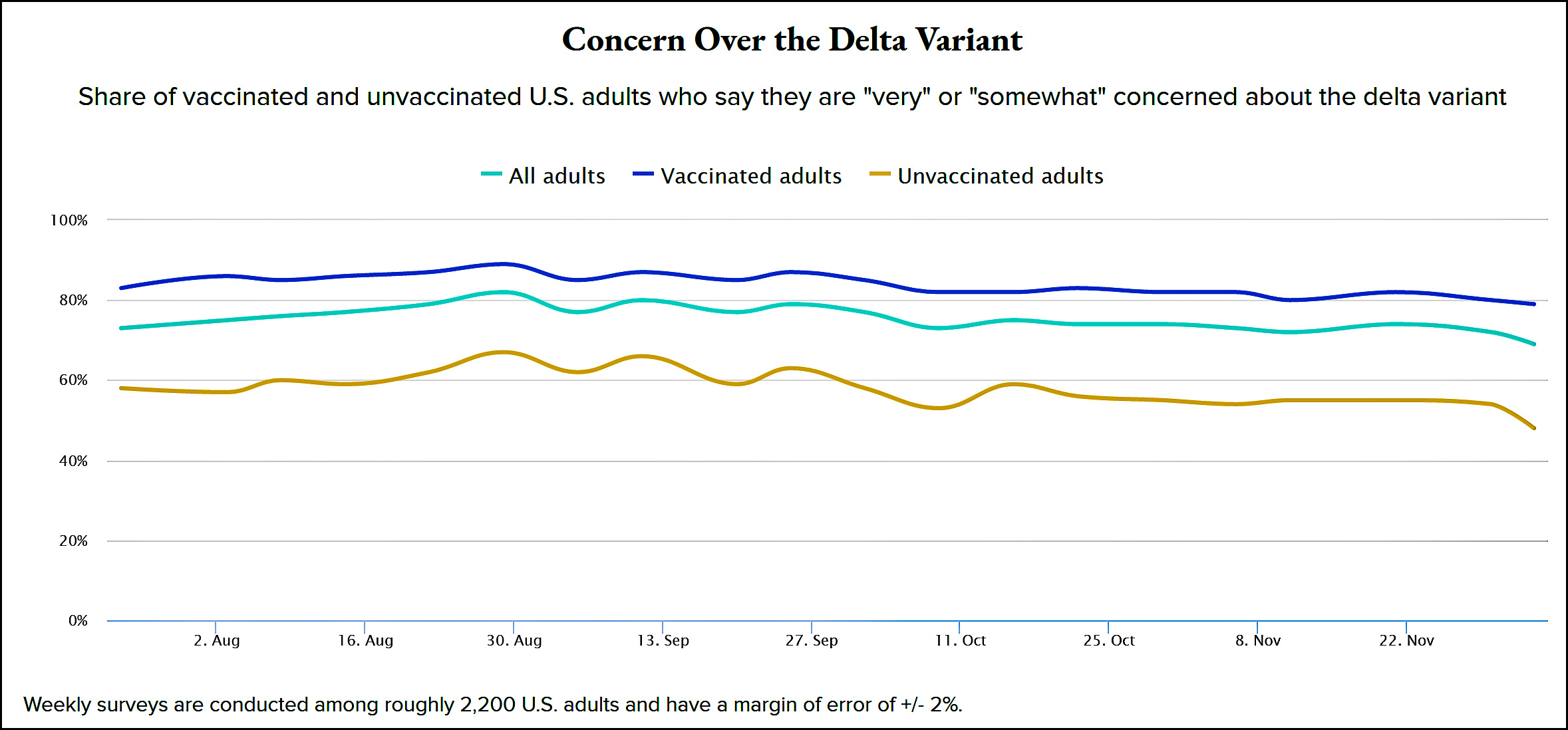 This tells us that although concern about COVID has declined slightly since summer, about 70% of all adults are still concerned about it. This isn't surprising, since you can hardly avoid thinking about COVID given that it's splashed across practically every news broadcast.
This tells us that although concern about COVID has declined slightly since summer, about 70% of all adults are still concerned about it. This isn't surprising, since you can hardly avoid thinking about COVID given that it's splashed across practically every news broadcast.
So I'd guess that Walther is partly right and partly wrong. The behavior he sees might very well be mostly normal. However, what people feel is probably different. I'll bet there's more fear and concern about COVID in his hometown than he thinks, even if people mostly try to fit in by pretending nothing is amiss.
The funny thing about all this is that I'm closer to agreeing with Walther than I would have been a year ago. I think he's wrong about masks, which have become the great political statement of our time despite pretty good evidence that they work. However, it's also true that the best evidence seems to indicate that they have a modest effect, not a huge one.
As for all the other countermeasures, it's genuinely unclear how effective any of them are. I'm not arguing one way or the other here, just saying that the evidence isn't yet conclusive for most countermeasures. Do you remember the great Sweden Experiment? They mostly lived life normally and their infection rate was pretty high. But I kept saying I wanted to wait and see how things ended up when the pandemic was over. We're not there yet, but we're a lot further along and Sweden isn't looking so bad anymore:
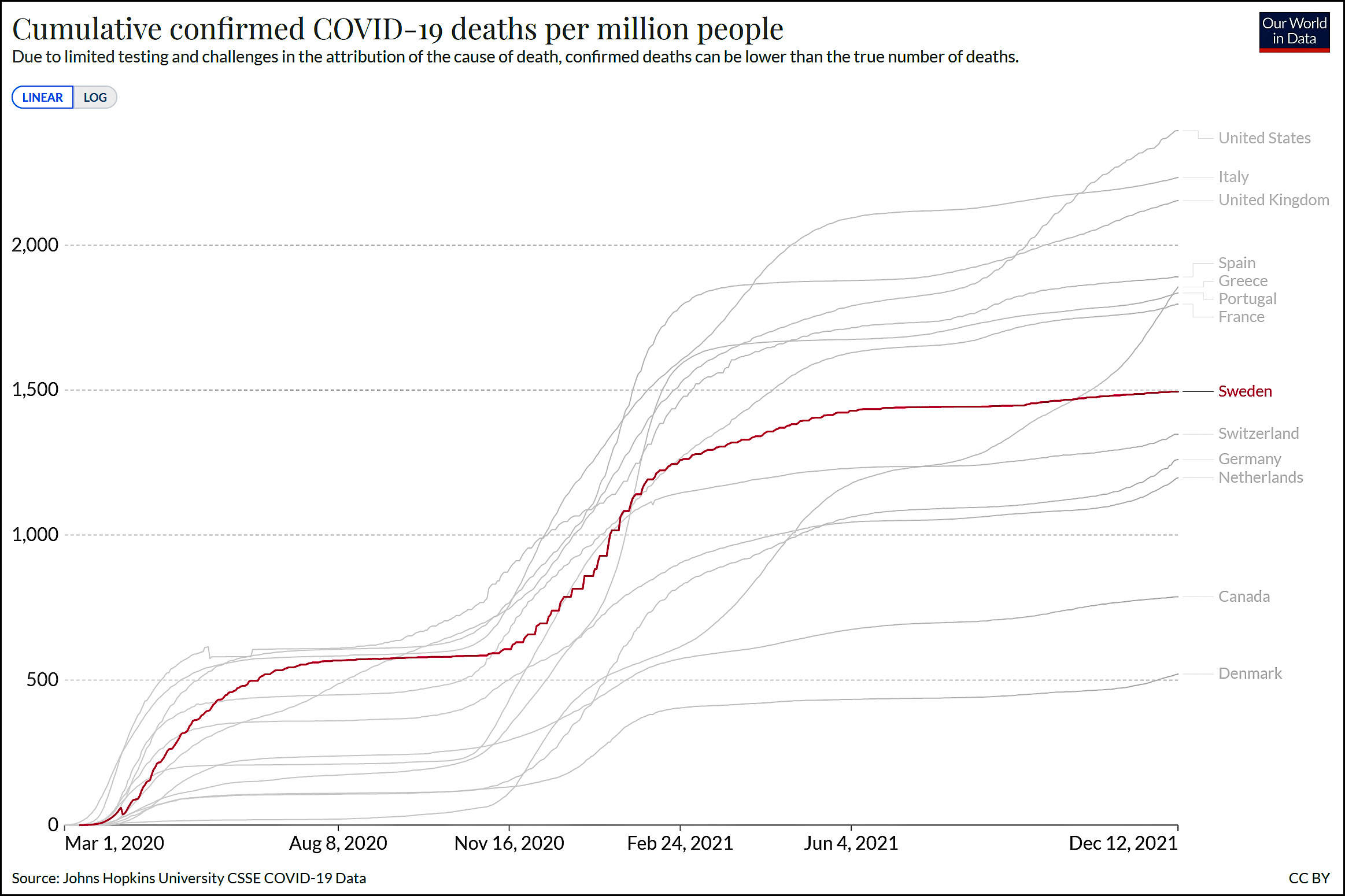 Sweden is no great shakes, but they also aren't looking terrible. Wait another few months and they might even be ahead of former COVID stalwarts like Germany and Switzerland.¹
Sweden is no great shakes, but they also aren't looking terrible. Wait another few months and they might even be ahead of former COVID stalwarts like Germany and Switzerland.¹
So far this has all been a bit speculative on my part, but one thing isn't: our appalling approach to closing schools. From the very beginning the evidence has suggested that closing schools was a bad idea, and that evidence has only gotten stronger over time. If there's anything that's soured the public on COVID countermeasures, this is surely it. Masks are a mild inconvenience at worst, but shutting down schools is practically existential for parents of school-age kids—not to mention the kids themselves. And the endless back-and-forth over school closures just makes it worse. Even if schools were more dangerous than they are, it's hard to believe that closing them has ever come close to balancing out the harm of keeping kids at home. Our elite class (or whatever you want to call them) wrecked their reputation big time over school closures.
This has turned into a long ramble, so let me sum up:
- Walther says everybody in his rural community has returned to their normal, non-COVID life. With a bit of allowance for hyperbole, polling evidence suggests he's probably right.
- However, it's likely that more people care about COVID than Walther thinks.
- Walther explicitly argues that all us urban liberal types have overhyped the need for cumbersome countermeasures. I think he takes this too far, but he may have a point.
- Chief among these cumbersome countermeasures has been school closures, which never should have become as widespread as they did.
I'm open to argument on all this stuff. It's basically just a brain dump of where I am right now.
¹It's worth noting that Sweden has tightened up its countermeasures since last year, which might account for some of their recent success. However, their mandates are still pretty weak compared to most countries.


